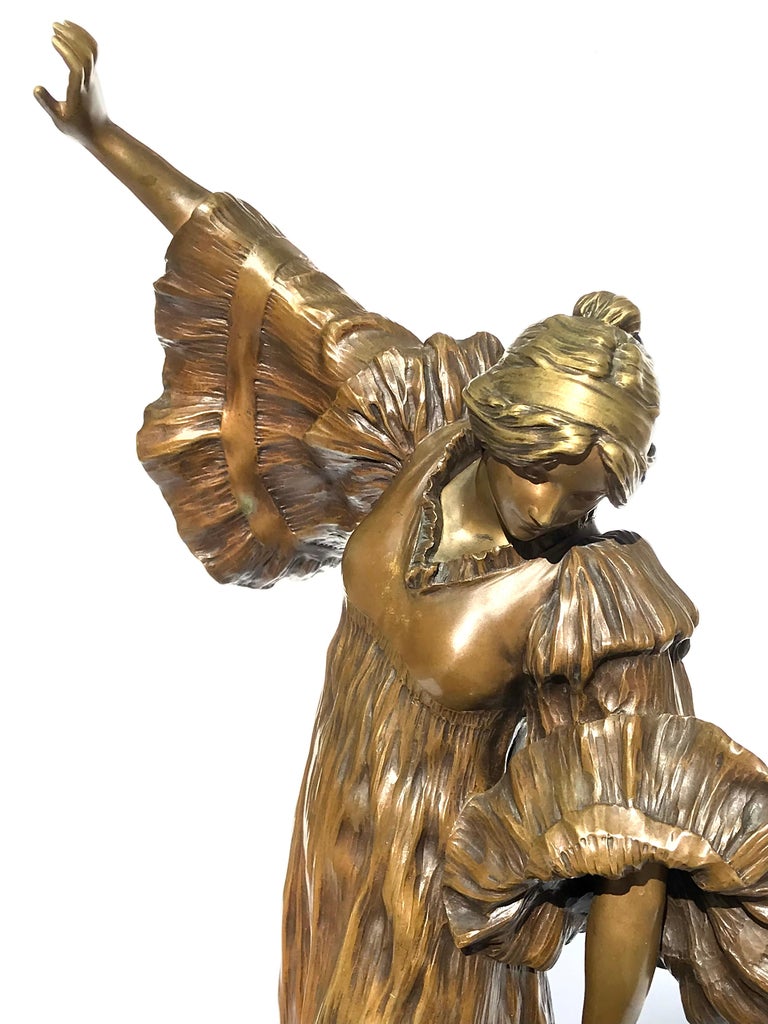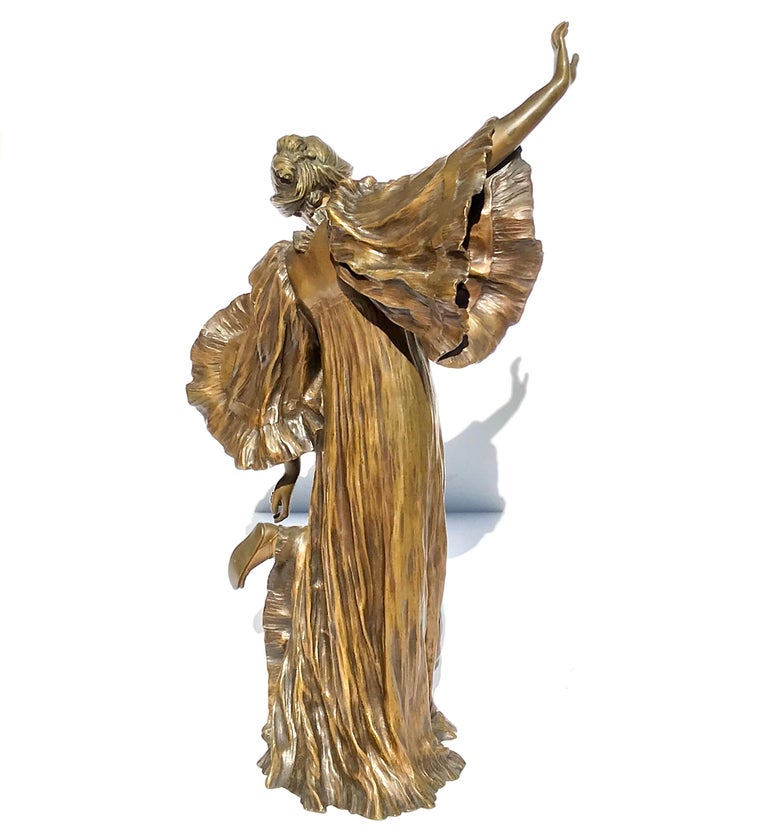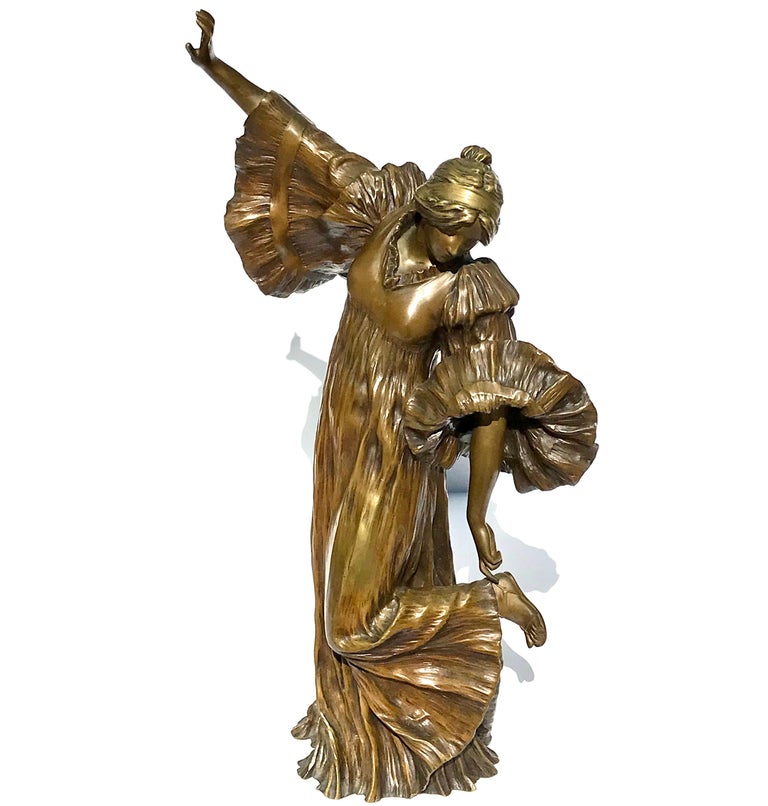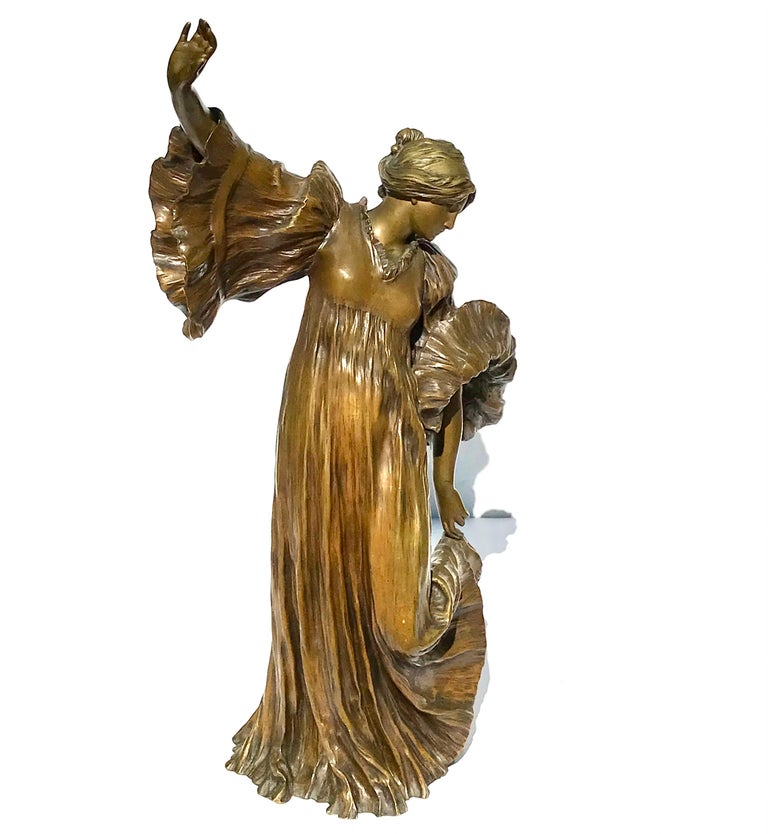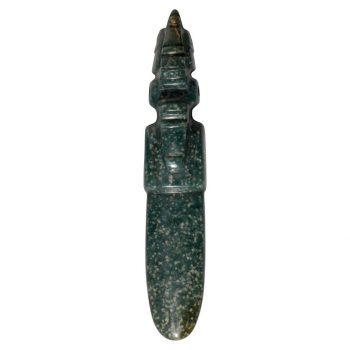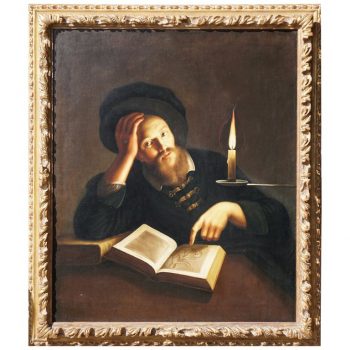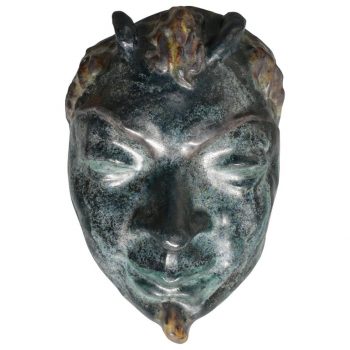Description
AGATHON LÉONARD (FRENCH, 1841-1923) Danseuse au Cothurne
Signed ‘A Léonard’ (on reverse) with Susse Frères foundry cachet, further stamped ‘M’
Gilt Bronze, light brown patina
21 inches high
11.5 Inches wide
7.5 Inches deep
This cast circa 1900.
Condition: Excellent!
Literature: Similar examples illustrated:
I. Böstge, Agathon Léonard, Le Geste Art Nouveau, Paris, 2003, p. 68;
V. Arwas, Art Nouveau, The French Aesthetic, London, 2002, p. 36.
P. Kjellberg, Bronzes of the 19th Century, Paris, 2001, p.433; I. Becker, Agathon Léonard, Jeu de l’Echarpe, exh. cat. Brohan Museum, Berlin, 2000; P. Cadet, Susse Frères 150 years of sculpture 1837-1987, Paris, 1992, pp.64-65
This finely chased figure in an elaborately draped dress is part of a series of dancers, the Jeu de l’Écharpe, conceived by Agathon Léonard, which was first exhibited at the Société Nationale des Beaux-Arts in 1897 as a project for a theatre foyer. The dancers in elegant poses are all characterised by their delicate gestures, loose dresses and wide sleeves. They rapidly became Léonard’s most popular works, and were produced in gilt bronze by the Susse foundry.
Agathon Léonard, born to Belgian parents as Léonard Agathon van Weydeveldt, studied in his hometown Lille under Delaplanche before settling in Paris, first exhibiting at the Salon in 1868. He had a successful career, exhibiting regularly in Paris until 1914 and serving as part of the jury for the Société Nationale des Beaux-Arts. He became particularly known for his small sculptures characteristic of the Art Nouveau. His most successful works, the various figures of the Jeu de l’Écharpe, were offered to the Empress of Russia as a table centrepiece, and became bestselling figurines in porcelain, cast by the Sèvres factory.



